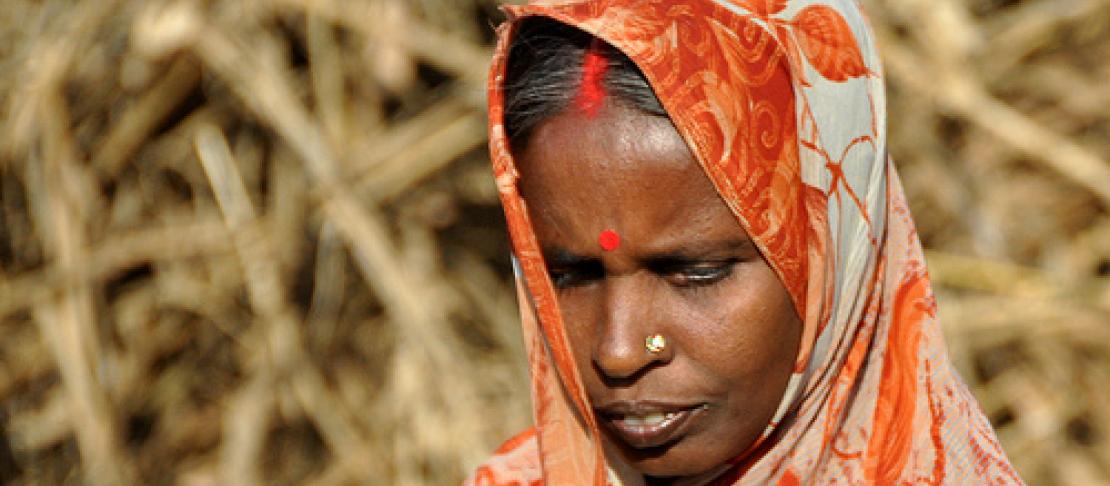Climate change, smallholder farmers and the cycle of poverty

When discussing climate change, we often discuss about the technical part of “agriculture”: crop varieties, irrigation or farming methods. But climate change also has a profound social impact within the rural communities, which rely mostly on agriculture. Climate change will push many smallholder farmers over “the edge”, back into poverty.
Arti Devi from Rambad in Bihar, India, is one of them.
Arti is married and has three children, two girls and a boy. Up to some years ago, she owned a small plot of land where she cultivated wheat and some vegetables, and had two buffaloes. This was sufficient to provide food and an income to her family.
“As the weather changed, we had less rain in this region. The yearly floods which used to bring in new fertile soil to my fields, just stopped. So my field yielded less and less.”, Arti explains, “As the lands dried up, it also became more difficult to find fodder for the buffaloes”.
To make matters worse, a few years ago, her husband had an accident. It disabled him from working on the fields so now he works as labourer in the city. He earns 1,000 rupees (about US$25) per month. Half of it, he sends home to Arti.
“We had no savings to cover my husband’s initial medical expenses”, she whispers, “So, we first had to mortgage our land, and later on, we had to sell the buffaloes. Now, I am left with no land, and no animals. I have to work as day labourer on other people’s fields. That’s my income now.”
For six hours of work on the fields, she gets about 20 rupees (about US$0.5) and 2-3 kgs of vegetables. “But with this changing weather, things got even worse”, Arti says, “I used to be able to work about three weeks per month, and six month per year. But now, the fields yield less. Some fields are left fallow during summer as there is not enough water in the boreholes. So there is less work for us, day labourers. Now, we can only work maybe fifteen days per month, and four months per year.”
“The only option I had was to take my oldest daughter from school. She now works as a day labourer also. Once my youngest daughter will be a bit older, she will help me on the fields also. I will try to keep my son in school, so he can get a decent job later. But I am not sure if I will manage. We hardly manage to buy our food.”
And that is where the cycle starts back at the beginning.
The way ahead for researchers and smallholder farmers facing current and coming challenges posed by climate change lies in learning from each other while sharing knowledge and experiences.
Photo in this article by Peter Casier.


